Proper post-operative care is crucial for ensuring the successful healing of dental implants and preventing complications. Adhering to specific guidelines promotes healing and minimizes risks, ensuring long-term success.
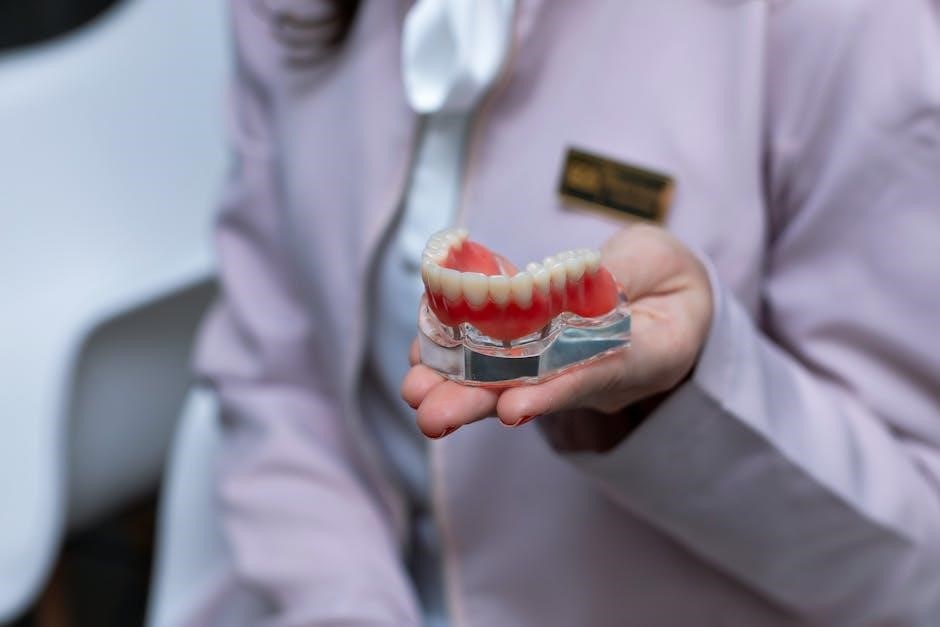
Immediate Post-Operative Instructions
Follow specific guidelines to manage bleeding, swelling, and discomfort. Use gauze for bleeding, ice packs for swelling, and prescribed pain medications. Avoid hot foods and drinks.

2.1. Controlling Bleeding After Surgery
Minor bleeding is normal after dental implant surgery. To control it, bite firmly on the provided gauze for 30-60 minutes. Replace the gauze as needed. If bleeding persists or becomes heavy, contact your dentist immediately. Avoid rinsing or spitting excessively, as this can dislodge the blood clot. Moist tea bags can also be used if bleeding continues. Elevate your head while resting to reduce blood flow to the surgical site. Avoid strenuous activities that might increase bleeding. Follow these steps to ensure proper clotting and promote healing.
2.2. Managing Swelling and Bruising
Swelling and bruising are common after dental implant surgery. To minimize swelling, apply an ice pack or cold compress to the affected area for 30 minutes at a time while awake. Keep your head elevated to reduce blood flow to the site. Swelling typically peaks 2-3 days post-surgery and subsides afterward. Bruising may appear around the face but fades within a few days. After 48 hours, warm compresses can be used to aid healing. Avoid strenuous activities that may worsen swelling. These symptoms are temporary and part of the recovery process. If swelling becomes severe or persistent, contact your dentist for further guidance.
2.3. Pain Management and Discomfort Relief
Pain and discomfort after dental implant surgery can be managed with over-the-counter medications like Tylenol or Ibuprofen. Start taking pain relievers before the local anesthetic wears off to reduce initial discomfort. Follow the recommended dosage and avoid exceeding the daily limit. If prescribed, take pain medication as directed by your dentist; Mild soreness and a sore throat are normal and typically subside within a few days. To minimize nausea, take medication with food or water. If pain worsens or persists beyond the expected recovery period, contact your dentist immediately. Proper pain management ensures a smoother recovery and helps prevent complications.
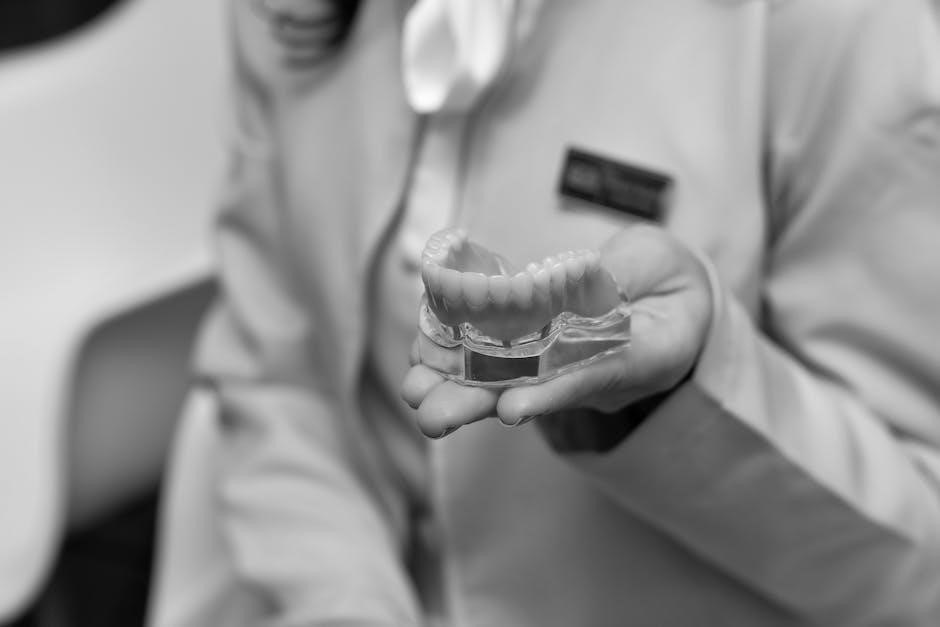
Oral Hygiene After Dental Implant Surgery
Proper oral hygiene is essential for implant healing; Start rinsing with warm saltwater 24 hours post-surgery and continue regularly. Use a soft-bristled toothbrush to clean gently around the implant site, avoiding direct contact to prevent irritation and promote a smooth recovery.
3.1. Rinsing and Mouthwash Recommendations
Start rinsing with warm saltwater 24 hours after surgery, continuing 5-6 times daily, especially after meals. Use a mild mouthwash if recommended by your dentist, avoiding alcohol-based products that may irritate the surgical site. Gently swish the solution without vigorous movement to avoid dislodging the blood clot. Avoid using harsh mouthwashes that can interfere with healing. Saltwater rinses help reduce bacteria and promote a clean environment for recovery. If prescribed, chlorhexidine mouthwash can be used for its antibacterial properties. Always follow your dentist’s specific instructions for rinsing to ensure proper healing and avoid complications.
3.2. Brushing Techniques to Avoid Damaging the Implant
Use a soft-bristled toothbrush to gently clean around the implant site, avoiding direct contact with the implant during the initial healing phase. Brush your natural teeth normally with a fluoride toothpaste, but be cautious near the surgical area. Avoid using abrasive toothpastes or harsh brushing techniques that could damage the implant or disrupt the healing process. Do not brush the implant itself until advised by your dentist. Resume brushing the implant gently with a soft toothbrush once healing is underway, typically after a few days. Always follow your dentist’s specific recommendations for brushing to ensure proper care and avoid complications during recovery.
3.3. Avoiding Certain Areas During Healing
Avoid brushing or touching the surgical site or implant during the initial healing phase to prevent dislodging the blood clot or damaging the implant. Refrain from using harsh mouthwashes or abrasive toothpaste near the area. Do not floss or use interdental brushes around the implant until your dentist advises it is safe. Avoid chewing or biting directly on the implant or the surrounding area until fully healed. Keep the implant site clean by gently rinsing with saltwater or mouthwash as directed. Avoid using straws or drinking hot liquids, as suction or temperature changes can disrupt healing. By protecting the implant site, you promote proper healing and ensure the long-term success of your dental implant.

Dietary Recommendations for Recovery
A soft, nutrient-rich diet is essential during recovery. Stick to liquids and soft foods for the first 24 hours, then gradually resume normal meals as comfort allows.
4.1. Initial Diet (First 24 Hours)
Following dental implant surgery, a soft or liquid diet is recommended for the first 24 hours to minimize discomfort and protect the surgical site. Avoid hot foods and drinks, as they can cause irritation or bleeding. Opt for cool or room-temperature options like yogurt, smoothies, or broths. Stay hydrated by drinking plenty of water, but avoid using a straw, as the suction can dislodge the blood clot. Soft, nutrient-rich foods such as scrambled eggs, mashed potatoes, or applesauce are ideal. Avoid chewing directly over the implant site during this period. Alcohol and spicy foods should also be avoided to promote healing and reduce the risk of complications.
4.2. Gradually Resuming a Normal Diet
After the first 24 hours, you can gradually reintroduce soft, easy-to-chew foods into your diet, such as soft fish, pasta, or mashed bananas. Avoid hard, crunchy, or sticky foods that could dislodge the blood clot or irritate the surgical site. As healing progresses, you can slowly incorporate more solid foods, but continue to avoid biting directly on the implant site. It’s important to prioritize nutrient-rich meals to support your body’s recovery. However, refrain from consuming alcohol, spicy foods, or hot beverages until fully healed. Return to your normal diet gradually, ensuring each food choice promotes comfort and healing without risking complications.
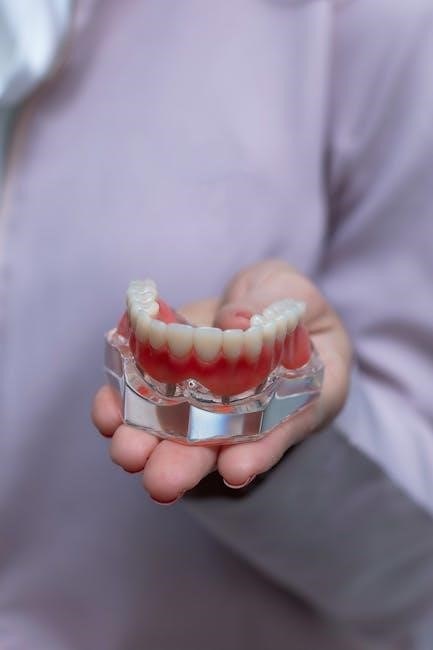
Activity and Exercise Guidelines
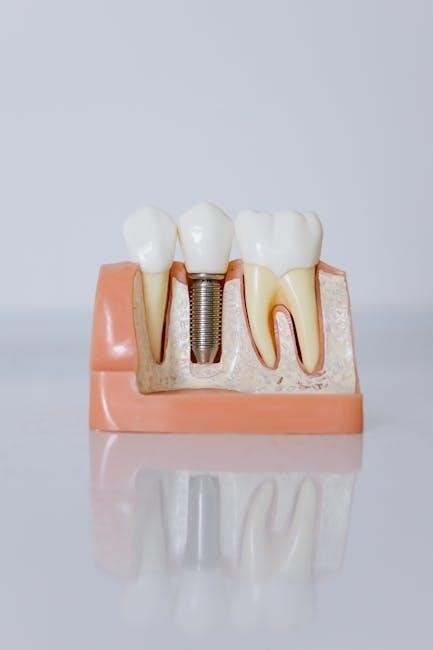
Rest is essential after surgery to promote healing. Avoid strenuous activities for the first few days to minimize bleeding and discomfort. Keep your head elevated to reduce swelling and ensure proper recovery.
5.1. Avoiding Strenuous Activities
Avoiding strenuous activities is crucial during the initial healing phase following dental implant surgery. Strenuous exercise can dislodge the blood clot, leading to prolonged bleeding or implant failure. Patients should avoid heavy lifting, bending, or rigorous workouts for at least 48 hours post-surgery. Even light exercise, such as walking, should be limited to avoid increasing heart rate excessively. Elevating the head while resting can help reduce swelling and promote a smooth recovery. Resuming normal physical activities should only occur gradually and under the dentist’s guidance to ensure the implant site remains undisturbed and heals properly.
5.2. Resuming Physical Activities Safely
Resuming physical activities after dental implant surgery requires a gradual and cautious approach. Patients should avoid bending, lifting heavy objects, or engaging in contact sports for at least one week to prevent dislodging the blood clot or damaging the implant site. Light activities, such as walking, can typically be resumed within a few days, but intense exercise should be postponed for 1-2 weeks. It’s essential to keep the head elevated during rest to minimize swelling and promote healing. Avoiding activities that increase heart rate excessively can help prevent throbbing or bleeding at the surgical site. Always follow the dentist’s specific timeline for safely resuming physical activities to ensure proper healing and avoid complications.
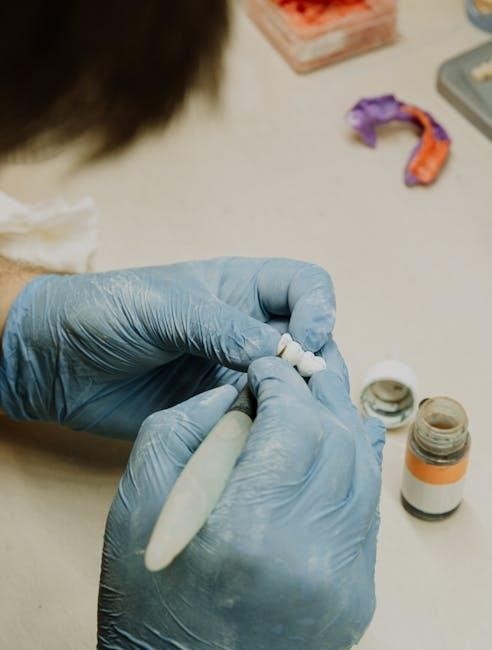
Monitoring the Healing Process
Monitor healing by observing swelling, pain levels, and bleeding. Contact your dentist if unusual symptoms arise to ensure proper recovery and address potential complications promptly.
6.1. Signs of Normal Healing
Normal healing after dental implant surgery typically includes minor swelling, bruising, and discomfort, which subside within a few days. Bleeding should be minimal and controllable with gauze. Pain usually lessens gradually, and most patients resume normal activities within a week. Swelling can be managed with ice packs, and bruising may appear but fades naturally. Healing progresses smoothly if post-operative instructions are followed, such as adhering to dietary restrictions and maintaining oral hygiene. If symptoms improve steadily, it indicates proper healing. However, if bleeding persists, swelling increases, or pain worsens, contact your dentist to rule out complications. Monitoring these signs ensures a successful recovery process.
6.2. Identifying Potential Complications
Potential complications after dental implant surgery may include excessive bleeding, severe pain, or signs of infection such as redness, swelling, or pus. Numbness or tingling that persists beyond a few days could indicate nerve damage. If swelling or bruising worsens or does not subside, it may signal an issue. Contact your dentist immediately if you experience uncontrollable bleeding, increasing pain, or fever, as these could indicate infection or improper healing. Early detection of complications is crucial for addressing them effectively and ensuring the success of the implant. Monitoring your recovery and reporting unusual symptoms promptly helps prevent long-term issues.
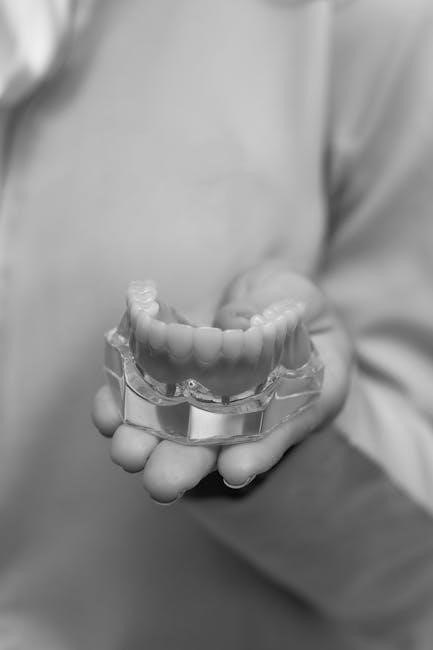
Follow-Up Appointments and Check-Ups
Regular follow-ups are essential to monitor healing progress, ensure proper implant integration, and address any concerns. Scheduled visits allow your dentist to assess recovery and make necessary adjustments.
7.1. Importance of Scheduled Visits
Scheduled visits are vital for monitoring the healing process and ensuring the implant integrates successfully. These appointments allow your dentist to assess the implant’s stability, check for proper osseointegration, and address any potential issues early. Regular check-ups help prevent complications such as infection or implant failure. Your dentist may also use these visits to remove sutures, if present, and provide guidance on gradually increasing your diet and activities. Consistency in follow-ups ensures a smooth recovery and optimal results, making them a critical component of post-operative care.
7.2. What to Expect During Follow-Up
During follow-up appointments, your dentist will examine the surgical site to ensure proper healing and assess the implant’s stability. They may remove sutures if present and evaluate the integration of the implant with the surrounding bone. You can expect guidance on gradually resuming normal activities and dietary habits. Your dentist will also monitor for any signs of complications, such as infection or improper healing. These visits provide an opportunity to address any concerns and receive personalized advice tailored to your recovery progress. Regular follow-ups ensure that your implant is on track for optimal results and long-term success.

Emergency Situations and When to Contact Your Dentist
Contact your dentist immediately if you experience excessive bleeding, severe pain, swelling, or signs of infection, such as redness or pus, to address potential complications promptly.
8.1. Excessive Bleeding or Swelling
Excessive bleeding or swelling after dental implant surgery can indicate complications. If bleeding persists despite gauze pressure or swelling worsens, contact your dentist immediately. Apply ice packs to reduce swelling and avoid strenuous activities. Persistent bleeding may require professional intervention to prevent further issues.
8.2. Severe Pain or Infection Signs
If you experience severe pain that worsens over time or signs of infection, such as redness, pus, or fever, contact your dentist immediately. Persistent pain beyond the expected recovery period may indicate complications. Infection signs, including swelling or discharge, require prompt attention to prevent implant failure. Do not delay seeking professional care, as early intervention is key to resolving issues and ensuring implant success.



